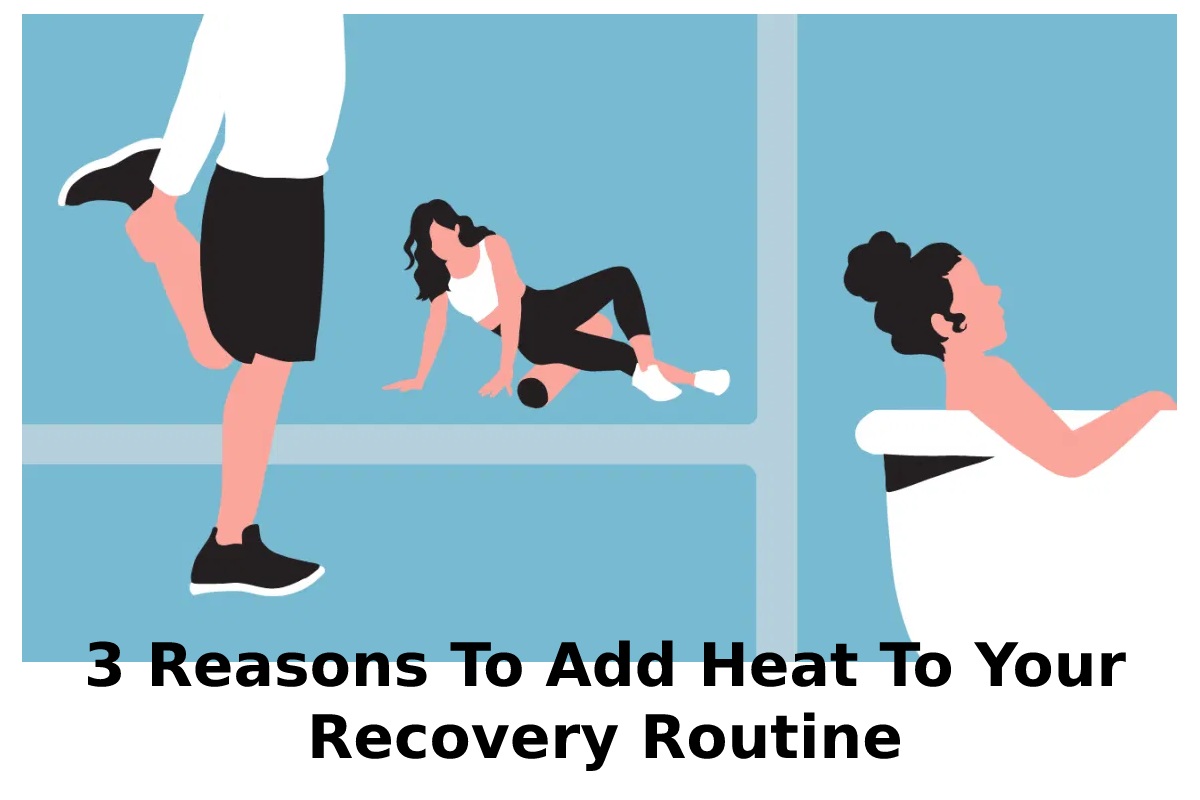Post-Rhinoplasty Care: How to Shower Properly and Protect Your

Add Heat To Your Recovery Routine
Intense workouts can make you feel fantastic, but they can also leave you feeling sore. Soreness isn’t necessarily a sign of a good workout, but it’s often unavoidable.
Do you have a workout recovery routine? What do you do after a workout? Do you go for a walk, lie down, meditate, or do you just go on with your day?
After reading this article, you may want to try some form of heat therapy after your workouts.
1. Heat is Healing
After a good workout, nothing beats relaxing in your backyard on a cool night next to a warm fire. Even when it’s part of your recovery routine, sitting by the fire can be considered an extension of your workout.
There are several physical and mental health benefits associated with an open flame. Fire pits, for example, have been used for centuries as a means to gather groups of people to connect and share stories. Many people say the fire has properties that soothe anxiety and stress, and automatically make people feel more connected. You can get the help by following postal address means.
Table of Contents
Heat can Speed Wound Healing
In some studies, heat has been proven to stimulate new cell growth in the dermal layer of skin to assist in closing an open wound. Research from the Boston University School of Medicine has shown this to be true for healing chronic leg wounds.
Radiant Heat is Healing
As for the physical benefits of fire, it’s scientifically proven that radiant heat is healing. Fire produces infrared heat, just like the sun. Infrared radiation is not the same kind of heat you get from your central heating system or your oil-filled heater.
Infrared heat is life-affirming and is frequently used for healing. Many people regularly visit infrared saunas to soak up the healing properties of IR radiation to reduce joint pain, back pain, heal soft tissue injuries, and increase circulation.
Any kind of exposure to heat will feel good to your body, whether it’s sitting in hot water, enjoying a fire pit, or sweating it out in a sauna.
2. Heat is usually free or cheap
Can’t afford the $100 price tag for a trip to the sauna after each workout? You don’t have to spend a bunch to get heat therapy at home after a workout. So if you have a bathtub, you can fill it practically for free with hot water. The cost of electricity to fill your tub with hot water will be negligible.
If you have a hot tub, you can soak up the warmth more than you can in a bathtub. Hot baths are fantastic, but the water tends to get cold fast. Moreover, Hot tubs are one of the best ways to relax after an intense workout.
Having a hot tub on your property is even better when the weather is slightly cool because you can feel the contrast between the warm water and the cool air at the same time.
Other Cheap or Free forms of Heat Include:
- Electric heating pads
- Electric blankets
- Reusable heating packs
- Heated water bottles
- Soapstone heaters
- A simple campfire
- A fire in the woodstove
While a fireplace also creates heat, it doesn’t create much warmth. Fireplaces are generally for aesthetics rather than heat. If you want a fire in your home to provide heat, you’ll need a wood stove.
3. Heat Reduces Muscle Spasms
Do you experience muscle spasms after a workout? Many people do, and it’s extremely unpleasant. Heat therapy after a workout can prevent and reduce muscle spasms.
Muscle spasms can also be caused by other factors, such as not consuming enough high-quality sodium (like unprocessed Himalayan salt rich in minerals, not table salt) and low potassium.
If you regularly experience muscle spasms after a workout, make sure you’re staying hydrated, consuming high-quality sodium, and getting enough potassium and magnesium in your diet.
Mineral Deficiency can Cause Leg Cramps
Most people don’t eat enough potassium and magnesium on a regular basis, but it’s easy to get high-quality bone and joint supplements for these important nutrients. Magnesium L-threonate has shown to be the most bioavailable form of magnesium. This form of magnesium is well-known for its brain-enhancing abilities, but it’s also superior in other ways.
Although it’s a bit pricey, it’s worth the extra cost. While studies have shown magnesium supplements are ineffective in treating leg cramps, it’s not a spot-treatment. Treating muscle cramps in the moment requires a magnesium spray that gets absorbed directly into the skin at the site of the cramp.
Heat is Healing – Get it where you can
Heat feels great after an intense workout. If you’ve never tried post-workout heat therapy, try the forms of heat outlined in this article. You might be surprised at how good it makes you feel.



